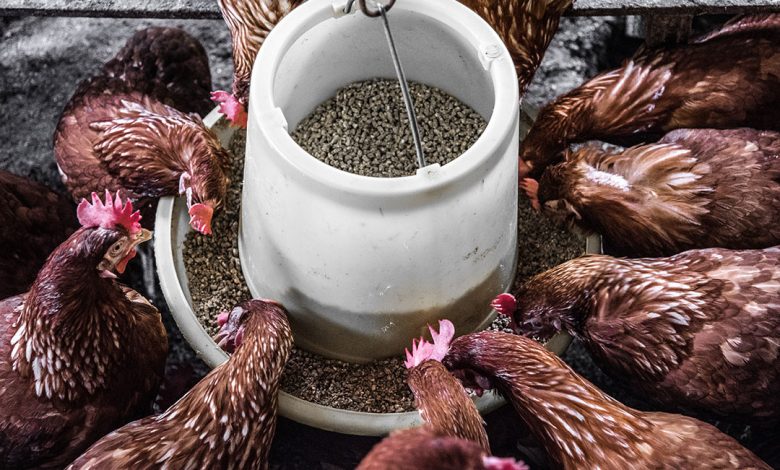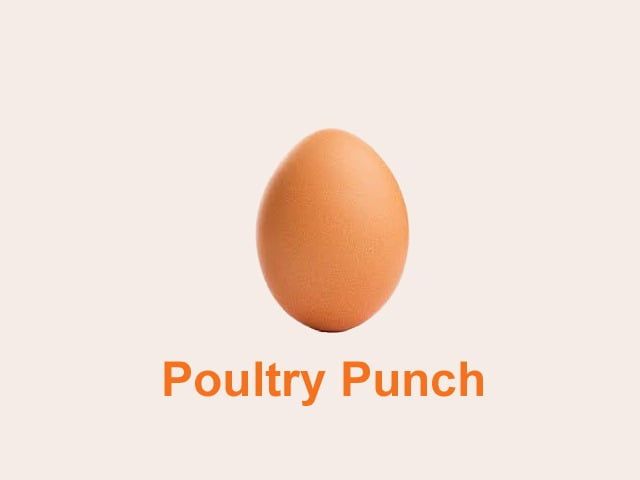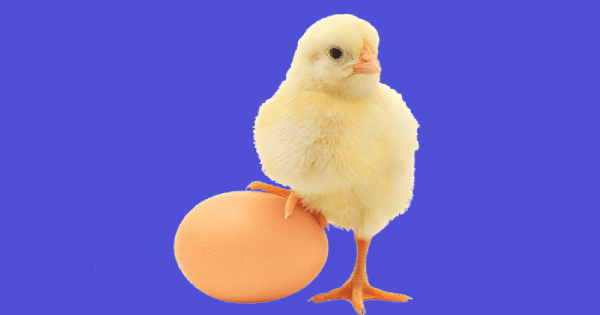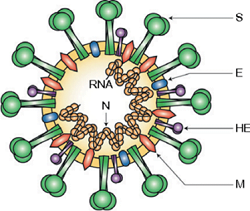Role of Individual Enzymes in Poultry Nutrition

Role of Individual Enzymes in Poultry Nutrition
Unveiling the Magic of Enzymes: The Remarkable Role in Poultry Nutrition
When it comes to raising healthy and productive chickens, nutrition is the key. A well-balanced diet provides all the essential nutrients need for growth, egg-laying, and overall well-being of birds. While proteins, carbohydrates, fats, vitamins, and minerals are well-known components of poultry nutrition, there’s one unsung hero that plays a remarkable role is enzymes. These are tiny, but powerful molecules, are the secret behind unlocking the full potential of poultry nutrition. In this article, we’ll explore the fascinating world of enzymes and their significance in poultry health.
Understanding Enzymes in Poultry Nutrition
Enzymes are natural protein molecules that act as biological catalysts, accelerating chemical reactions within the living organisms. In the context of poultry nutrition, enzymes play a crucial role in breaking down complex nutrients into simpler forms that chickens can absorb and utilize efficiently. Essentially, they act as the “keys” that unlock the nutrients in the feed, making them accessible and usable by the chicken bodies.
Types of Enzymes in Poultry Nutrition
Amylases: These enzymes break down complex carbohydrates (starches) into simpler sugars, allowing chickens to digest and absorb the energy locked within the carbohydrates.
Proteases: Proteins are composed of amino acids, and proteases help break down these proteins into individual amino acids, which are the building blocks for muscle development and overall growth.
Lipases: These enzymes break down fats (lipids) into fatty acids and glycerol, facilitating the absorption of essential fatty acids and fat-soluble vitamins.
Phytases:
Cereals and oilseeds contain 1-2% of phytate, and 60-90% of total phosphorus present in the seeds in this phytate phosphorus. Phytase catalyzes the hydrolysis of phytic acid in a stepwise manner, resulting in the formation of myoinositol and phosphoric acid as intermediate products (IP5, IP4, IP3, IP2, IP1). The phytase enzyme liberates phosphorus in feedstuffs and also releases other minerals (e.g., Ca, Mg) along with proteins and amino acids bound to phytate. As a result, phytase reduces the reliance on inorganic phosphorus in diets, increases the availability of phosphorus for the bird, and reduces the amount of phosphorus excreted into the environment.
NSP Enzymes
Non starch polysaccharides (NSPs) are carbohydrate fractions excluding starch and free sugars consisting of cellulose, hemicellulose, pectins and oligosaccharides. Plant cell walls generally consist of about 35–50% cellulose, 20–35% hemicellulose, and 10–25% lignin by dry mass (Sticklen, 2008). Poultry has no endogenous enzyme system to breakdown dietary NSP, hence are considered anti-nutritional factors for poultry. When NSPs are not properly digested, they can form viscous gels in the bird’s gastrointestinal tract, reducing nutrient absorption and causing digestive disturbances. This can lead to reduced feed efficiency, slower growth rates, and increased susceptibility to various gastrointestinal disorders.
NSP enzymes or carbohydrases or fibrolytic enzymes that play a critical role in breaking down complex carbohydrates present in plant-based feed ingredients like grains, such as wheat, barley, rye, and corn, as well as in other fibrous ingredients used in poultry diets. They are commonly used as feed additives in poultry nutrition to improve nutrient digestibility and overall animal performance.
By supplementing poultry diets with NSP enzymes, the complex carbohydrates in the feed are pre-digested, allowing the bird’s endogenous enzymes to effectively break down the simpler sugars into absorbable nutrients. This results in improved nutrient utilization, better feed conversion efficiency, and enhanced overall performance. Additionally, the reduction in the viscosity of gut content prevents the formation of sticky gels, leading to better gut health and reduced incidences of digestive disorders. It also reduces the anti-nutritional effects of NSPs, allowing poultry to better utilize the nutrients present in their feed.
The mechanism of action of NSP enzymes
- Cell walls destruction:
Breaking down of nutrient encapsulation effect of cell wall is one of the function of NSP degrading enzymes. Substrate specific NSP degrading enzymes in sufficient quantities are needed for degradation of xylans, β-glucans, cellulose and other components of the cell wall of any feed ingredient and also creates holes in the cell wall. This allows water hydration and large amounts of pancreatic proteases and amylases enabling the better digestion of the starch and protein more rapidly, reduces the endogenous secretion (i.e. lowering mucin production) and also alters the lower gut microbial populations.
- Reduction in intestinal viscosity:
NSPase’s mode of action includes the hydrolysis of soluble NSPs, which minimises the negative impact of increased intestinal viscosity. An increase in intestinal viscosity can reduce the pancreatic enzyme activities and the digestibility of carbohydrates, proteins and fats. Additionally, a slower feed transit can result in an increased proliferation of the gut microflora and poor absorption of nutrients.
- Bacterial population stimulation:
Exogenous NSPase(s) break down the plant cell wall carbohydrates and reduces the chain length and producing smaller polymers and oligomers. Finally, the fragments become small enough like short-chain oligosaccharides which act as a substrate (pre-biotic) for bacterial fermentation. Xylanases, cellulases, and mannanases produce Xylo-, gluco- and mannooligosaccharides, respectively. These short-chain oligosaccharides travel to the hindgut and become substrates for beneficial bacterial viz., Lactobacillus and Bifidobacterium species resulting in an increase in their population in the ileum and cecum resulting in volatile fatty acid production and decrease in pathogenic bacteria such as Clostridium perfringens (Sun et al., 2015).
Types of enzymes used in poultry nutrition
| Enzyme | Substrate | Effect |
| Cellulase | Cellulose | Degradation of cellulose |
| Glucanase | Beta-glucans | Reduction of intestinal digesta viscosity
Reduction of dirty egg problems |
| Pectinases | Pectins | Reduction of intestinal digesta viscosity |
| Xylanases | Xylans | Reduction of intestinal digesta viscosity |
| Galactosidases | Galactoside | Hydrolyze oligosaccharides |
| Mannanase | Mannans | Hydrolyze beta- mannans |
| Beta glucosidases | Glucosides | Hydrolyze the cellulose degradation products to glucose |
| phytases | Phytate Phosphorus | Release phosphorous stored in phytate |
| Proteases | Proteins | Improve protein digestibility |
| Lipases | Lipids | Improve fat absorption |
| Amylases | Starch | Improve starch digestibility |
It’s important to note that the effectiveness of NSP enzymes may vary depending on the specific diet composition, bird species and environmental conditions. Poultry nutritionists carefully formulate diets and choose the appropriate enzyme products to meet the specific needs of the birds and optimize their performance.
Benefits of using feed enzymes to poultry diets
Effect of enzymes on growth performance
One of the significant advantages of using enzymes in poultry nutrition is improved feed efficiency. By breaking down complex nutrients, enzymes increase the digestibility and absorption of nutrients from the feed. This means that chickens can extract more energy and nutrients from the same amount of feed, resulting in better growth rates and optimal production. Improved feed efficiency not only benefits the chickens’ health but also reduces the overall environmental impact of poultry farming.
Nikam and Reddy (2013) concluded that addition of enzyme mix (Xylanase, β-D glucanase, cellulase, mannase and pectinase at 2400, 800, 1800, 4800 and 2400 IU/kg diet) to the diet of broilers, improved the body weight gain, feed intake and FCR of birds.
Rama Rao et al. (2021) conducted a study in broilers by supplementing the corn soybean based diet with xylanase and α-amylase enzymes at different concentrations (8000 & 850 U/kg & 12800 & 1200 U/kg diet) respectively, and reported that significant improvement was observed in FCR, ready to cook yields & apparent ileal digestibility of energy in birds when enzymes added to the diet.
NSP enzymes could spare energy
Supplementation with NSP hydrolyzing enzymes has shown to improve the nutrient utilization and in turn ME content in high viscous diets fed to chickens. The quantum of energy release is based on the ingredient composition and enzyme combination and its concentration in the diet. Literature reported considerable release or sparing of energy with substrate specific NSP enzyme supplementation in chicken diet ranging between 50 to 300 kcal/kg diet based on composition of diet and supplemental enzymes, resulted in reduced feed cost.
Hussein et al. (2019) found that supplementation of KEMZYME® Plus (cellulase, β-glucanase, xylanase, protease and amylase) @ 0.5 g/kg to the Corn- SBM based diet, spared the energy of 200 kcal/kg of ME on broilers.
Narasimha et al. (2013a) confirmed that addition of Xylanase, cellulase and β-D-glucanase to the Corn+SBM+DORB (5%) +Sunflower meal (25%) based diet in layers spared the energy of 300 kcal/kg of ME.
Role of Enzymes in gut Health & immunity
The gastrointestinal tract of chicken is a delicate ecosystem that plays a critical role in nutrient absorption and immune function. Enzymes contribute to gut health by supporting the breakdown of nutrients in the digestive system. When the nutrients are efficiently broken down and absorbed, the gut environment remains balanced, reducing the risk of digestive disorders and promoting overall health. The NSP enzymes also affect immunity development in birds. Shashidhara and Devegowda (2003) stated that the gut-associated lymphoid tissue (GALT) can recognize microbes through a unique recognizing molecule called pathogen-associated molecular patterns (PAMP). The MOS has the same PAMP of some pathogens, so they can bind to pattern-recognizing receptors on the defense cells of GALT and in turn activate innate immune defenses.
Sun et al. (2015) reported that addition of enzyme mixture (Endo-1, 4-2-xylanase, endo-1, 3(4)-2-glucanase & mannanase/kg) to wheat-SBM based diet @ 500 mg/kg in broilers, decreased the digesta viscosity, lowered the ileal Clostridium perfringens colonization and also increased the ileal villus height.
Unlocking the Nutritional Potential of Non-Conventional Feed Ingredients
In recent years, poultry nutritionists have explored the use of non-conventional feed ingredients, such as by-products and alternative protein sources, to reduce feed costs and environmental impact. However, these ingredients may contain anti-nutritional factors that hinder nutrient absorption. Enzymes can help mitigate the effects of these anti-nutritional factors, making these ingredients more viable and nutritious options for poultry diets by reducing the demand for conventional feed resources.
Yildiz et al. (2018) reported that xylanase @ 400 g/ton supplementation to DDGS (10, 20, and 30% inclusion level) based diet in layers, improved the egg production and decreased the intestinal viscosity.
Nikam et al. (2017) conducted a study by supplementing with enzyme mixture (3200U xylanase, 600U b-d-glucanase, 1520U cellulase, 8000 U mannase, 3200U pectinase/kg diet) to the diet containing alternate protein supplements (GM, RSM, CSM each at 3%) in broilers and reported that significant improvement in BWG and FCR of birds.
Environmental Benefits of Enzymes in Poultry Nutrition
Enzymes not only enhance the chicken’s health and productivity but also contribute to sustainable and eco-friendly poultry farming. By improving feed efficiency, less feed is wasted, leading to reduced feed production and minimizing the environmental footprint. Reduced output of excreta, including reduced N and P & also reduced the production of ammonia from excreta.
Enzymes effect on litter problems:
Improved viscosity reduction enhances nutrient digestion, decreases water intake, and contributes to minimizing litter-related issues.
Conclusion
In the dynamic world of poultry nutrition, enzymes stand as the unsung heroes that optimize the potential of the feed. From improving nutrient absorption and gut health to unlocking the nutritional potential of alternative feed ingredients, enzymes play a multifaceted role in the well-being and productivity of chickens. Embracing the power of enzymes in poultry nutrition not only benefits the birds and farmers but also takes us one step closer to a sustainable and responsible poultry industry. As we continue to unlock the magic of enzymes, we unveil a healthier and more prosperous future for poultry farming.



